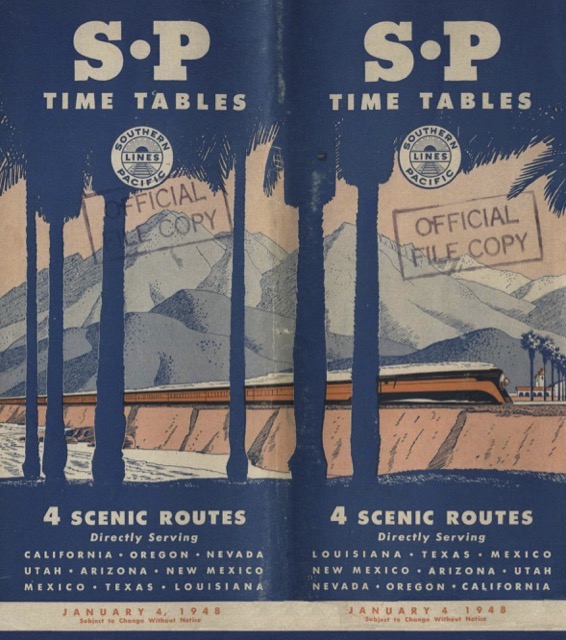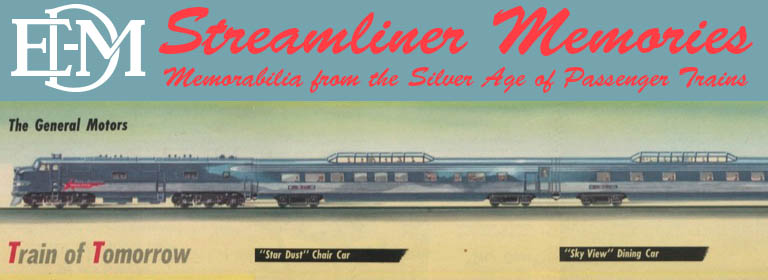The front cover of this timetable advertises the “new Golden State,” whose abbreviated name (it had previously been called Golden State Limited) covered up the fact that Southern Pacific was getting cold feet about passenger service. Originally, SP and Rock Island had ordered enough streamlined equipment to make a three-day-a-week train that was to be called the Golden Rocket, but — despite heavy advertising — SP withdrew after only one set of equipment had been delivered.
 Click image to download a 27.1-MB PDF of this 56-page timetable.
Click image to download a 27.1-MB PDF of this 56-page timetable.
Manufacturers were producing new streamlined trains as fast as possible, but by 1948 passenger train ridership had already declined by 30 percent from its wartime peak. On top of that, the Interstate Commerce Commission had proposed to limit passenger train speeds to 79 miles an hour unless railroads installed expensive automatic signaling equipment (a rule which would go into effect on January 1, 1951). SP wasn’t willing to install that equipment, which made it impossible for a train on the Golden State route to match the 39-3/4-hour schedule of the City of Los Angeles and Super Chief.
This timetable advertises a 45-hour schedule, which meant two nights plus most of two days, where the other trains could make the trip in two nights and one day. The ad somewhat apologetically noted that many of the cars “are fine modern cars built for high-speed use, but . . . are not streamlined.” However, “they will be replaced as soon as additional cars are received from the builders,” which would have been sooner if SP hadn’t cancelled its order.

According to other sources, SP balked at the cost of new signal and CTC requirements coming into effect in 1950 for the 100 mph running that would have made the Golden Rocket competitive with the Super Chief and City of Los Angeles. At their peak, SP provided service on a par with Santa Fe and Union Pacific.
Please ignore my post above as the author cover it. My apologies
While it is well-remembered that Santa Fe had signal that allowed 90 mph running, it is often forgotten that the UP did, and still does, have cab signalling that allowed it to match Santa Fe’s schedule. The SP had neither.
I think it was probably the right decision on SP’s part not to invest in CTC on the Golden State route; the cost to benefit ration was too high. On most of their other routes the combination of a mountainous profile (Shasta, Overland, southern end of the San Joaquin route) and/or lack of competition from other roads (Sunset, Coast, Shasta) negated the necessity of CTC upgrades. Likewise upgrading one 330 mile stretch of track in sparsely populated New Mexico probably seemed unnecessary.